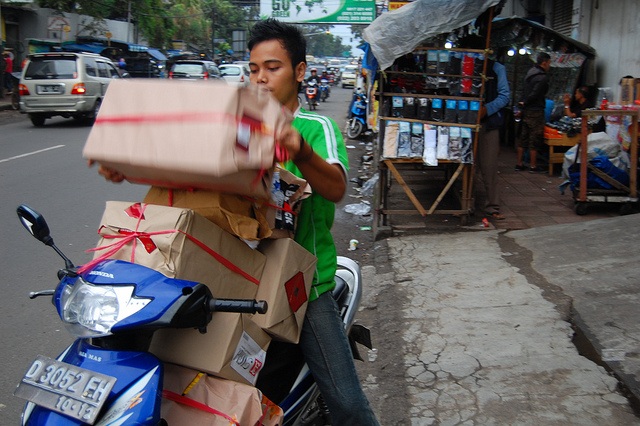Indonesia’s young, social, and increasingly wealthy population creates high growth potential for the country’s digital economy.
Players in the startup ecosystem are rolling up their sleeves to address hurdles that are keeping Indonesia’s digital economy from becoming a predicted US$130 billion behemoth.
Logistics and expensive oranges

Photo credit: Ikhlasul Ama.
Domestic delivery in Indonesia is more expensive than international shipping into the country.
According to a World Bank report last year, it is cheaper to ship a container of mandarin oranges from Shanghai to Jakarta than to send a similar freight from Jakarta to Padang in West Sumatra, which is only one-sixth the distance away.
Unsurprisingly, unreliable logistics has caused the nation’s ecommerce growth to fall behind expectations. However, with a US$400 million funding from the World Bank, Indonesia’s logistics networks is expected to improve.
Meanwhile, logistics startups continue to offer immediate solutions to consumers. Homegrown motorbike-hailing app Go-Jek has evolved into a logistics service that can traverse through congested roads in 25 cities in Indonesia. Policymakers have recognized the startup’s impact in helping businesses reach more customers and boost revenues.
Homegrown and international logistics startups such as Ninjavan, Lalamove, Anterin, Deliveree also continue to expand.
The recent entry of Chinese tech giants Alibaba and JD.com in Indonesia’s ecommerce market is expected to push established logistics companies to stay on their toes. Alibaba, through China Smart Logistics, has already partnered with Singpost and Indo Post to halve the delivery time for shipping goods from China to Indonesia.
Indonesians need to collaborate on electronic payments

Photo credit: Adam Cohn.
85 percent of the population still use cash transactions. A majority of the population remains unbanked (PDF).
Telcos, banks, and fintech startups have created their own payment platforms to make financial services more accessible.
Different lending startups are also furthering financial inclusivity in the country. Despite the booming startup ecosystem in Indonesia, there are nearly 49 million unbanked SMEs in the country that cannot provide collateral. P2P lending startups such as Amartha, Julo, and Investree aim to serve this sector.
Unsurprisingly, local P2P lending startups have successfully raised funding in the recent years and are already catching the attention of international investors.
Ecommerce installment lending startups are also helping further financial inclusivity in Indonesia. Some notable ones with fresh funding are Cicil, a platform for college students to access installment loans for digital devices, Akulaku, an online shopping app, and Cermati, a web portal for financial products such as personal loans and credit cards.
Indonesians prefer cash transactions due to a lack of trust in online payments, according to a 2017 Macquerie report (PDF). Beyond fintech, some of the most popular social platforms in the country, such as Line, WhatsApp, BBM, and Facebook, are evolving into ecommerce solutions that bridge businesses or sellers to customers and build customer trust through real-time one-to-one conversations between users. It has paid off thus far – in 2014, nearly 27 percent of ecommerce transactions in the country were done through social media.
Indonesia has yet to see an online payment breakthrough as there are too many online payment options that can be confusing to consumers. Moreover, Indonesia’s recent crackdown on ewallets, poses a challenge to startups. While Indonesia’s infrastructure development has a long way to go, players in its digital ecosystem – startups, corporations, investors, government and other institutions included – all have the capacity to provide solutions to fill in the gap.
Want to learn more about Indonesia’s digital economy?
Drop your details below to be updated with news on Indonesia’s innovation scene, and join us at Tech in Asia Jakarta 2017 on November 1-2. If you’d like to find out more on how we work with brands on innovation, please reach us at bizdev@techinasia.com.
This post How Indonesia’s digital economy is responding to infrastructure woes appeared first on Tech in Asia.
from Tech in Asia https://www.techinasia.com/indonesia-digital-economy-responds-to-infrastructure-woes
via IFTTT
No comments:
Post a Comment